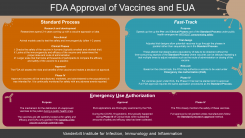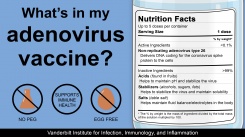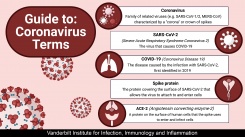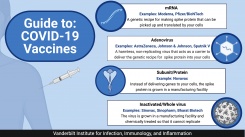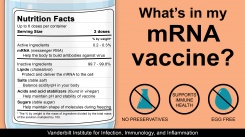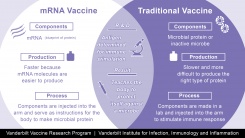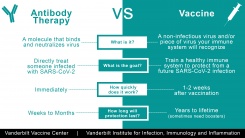FDA Approval of Vaccines and EUA Infographic
Helen Parrington
June 15, 2022
FDA Approval of Vaccines and EUA - All vaccines distributed in the USA are under regulation of the FDA. There is a Standard Process that researchers will use to go through clinical trials and vaccine approval. During the COVID-19 pandemic, the FDA utilized a Fast-Track method that helped vaccines be tested more quickly without compromising on safety goals. Additionally, due to the COVID-19 pandemic, the FDA also was granting Emergency Use Authorization (EUA) so that the vaccines could be administered to the public more quickly. It’s important to note that the FDA was working on modernizing clinical trials, including creating guidance for adaptive designs, back in 2018. The COVID-19 pandemic created the need for this “fast-track” to be implemented.... Click the image to the left to continue reading.
What's in my adenovirus vaccine?
August 10, 2021
The adenovirus-based vaccine is a type of vaccine that uses a surrogate virus instead of the actual coronavirus to deliver the components needed to induce an immune response. When the adenovirus infects your cells, it will release DNA coding that your cells can use to produce the spike protein. The spike protein – a harmless piece of the coronavirus – will train your immune response to protect you from getting infected/sick if you later encounter the actual virus. In addition to adding the coronavirus DNA, scientists also remove portions of the adenovirus essential for replication; thus, each virus can only infect one cell and cannot make copies of itself. Engineering the adenovirus further enhances the safety of the vaccine.... Click the infographic to learn more!
Guide to: Anitbody Terms
May 24, 2021
Most of the vaccines that protect us from viruses do so by stimulating your body to produce antibodies. Antibodies are y-shaped proteins that circulate in the blood and recognize and fight off pathogens such as viruses. Immune cells called B cells recognize the pathogens and make a range of antibodies in response to an infection.... Click the infographic to learn more!
Guide to: Coronavirus Terms
May 24, 2021
Coronavirus terminology can be confusing. You may see the terms SARS-CoV-2, COVID-19, and coronavirus used interchangeably, but these words don't mean the same thing. Coronavirus refers to an entire family of viruses. They were named coronaviruses because, under a microscope, protrusions on the virus surface resemble a crown (or corona). Many coronaviruses cause mild, cold-like symptoms, and we may have been infected with them before unknowingly.... Click the infographic to learn more!
Guide to: COVID-19 Vaccines
May 24, 2021
Viruses are remarkably simple for how much devastation they cause. SARS-CoV-2 is composed of a ball of protein and lipids (or fats) that contains genetic material (or RNA) inside. Different vaccine approaches either use parts of the virus (e.g., the genetic material or proteins) or the whole virus to generate an immune response to fight the infection.... Click the infographic to learn more!
What's in my mRNA Vaccine?
May 21, 2021
The mRNA vaccine is a new type of vaccine that allows your body to trigger an immune response without using the actual germ to train your immune system. Instead, it trains your immune response using a piece of the virus and will later protect you from getting infected/sick if you encounter the actual virus. Since it is new, here is a list of the generalized ingredients for the mRNA vaccines currently available in the US.... Click the infographic to learn more!
How does a mRNA vaccine compare to a traditional vaccine?
November 16, 2020
VI4 and the Vanderbilt Vaccine Research Program partnered to create this infographic, which outlines the key attributes of mRNA vaccines compared with traditional vaccines. This infographic aims to present the information in lay terms for the general public. Click the image to the left to learn more and to share with your social networks!
Antibody Therapy vs. Vaccine
May 21, 2020
